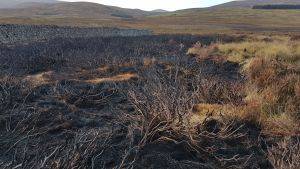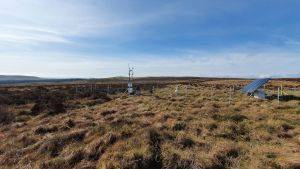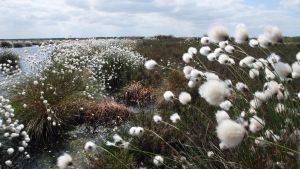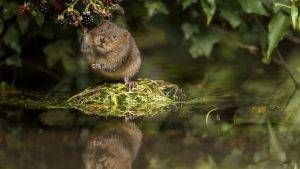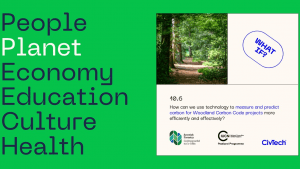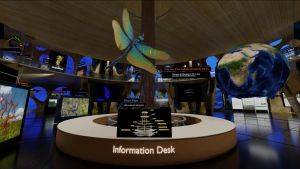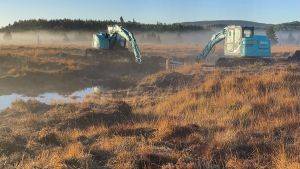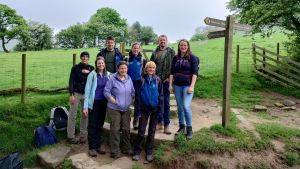Magnificent migrations
The image of the Atlantic salmon (Salmo salar) leaping waterfalls as they make their incredible ‘runs’ on the way to their freshwater spawning grounds is one of the most celebrated in the natural world. It is an awe-inspiring migratory feat which, in the minds of many, is intrinsically linked to the Scottish Highlands. Indeed, the scientific name ‘salar’ translates as ‘the leaper’.
Salmon in the UK spend the first few years of their lives as juveniles in freshwater before heading downstream to the sea, where they travel as far afield as Greenland. They frequently spend multiple winters at sea before returning to breed, although some return within one year and these are known as ‘grilse’. The odour of the river where they hatched is imprinted on them as young parr and they follow this to return to the same place to spawn. This physically arduous task results in the mortality of between 90-95% of those undertaking it, and the majority of those that do survive are female. These surviving females may return to spawn two or three times.
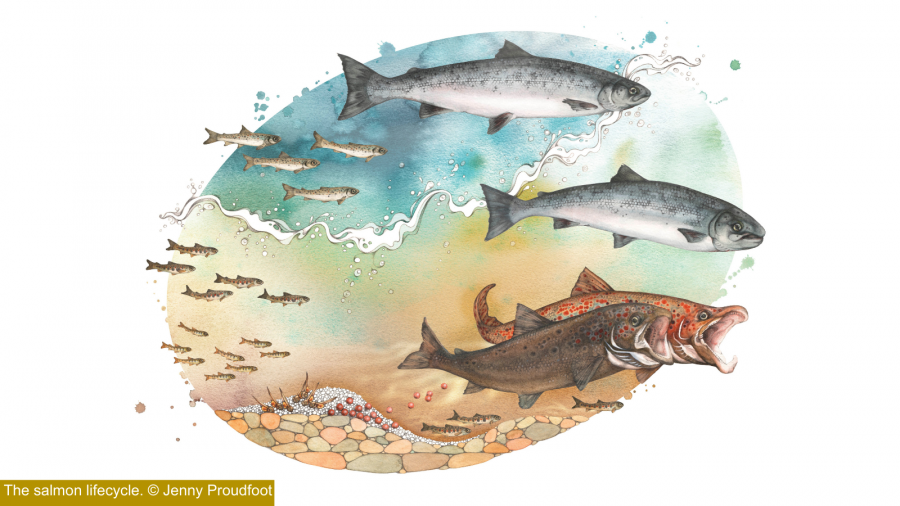
Salmon are predatory fish; in freshwater they eat insects and small invertebrates and in the marine environment they eat a range of foods from zooplankton to sprats and sand eels. There have even been bird remains found in the stomachs of some fish caught at sea.
Ecosystem indicators
Peatlands may not be the first habitat that springs to mind when people think of salmon, but in fact, peatlands play a vital role in their lifecycle. Salmon are highly sensitive to pollution and temperature changes and thus play a key role as indicators of ecosystem health. Dissolved organic content from damaged and eroding peatlands can increase the water temperature by darkening the water colour, in turn reducing the dissolved oxygen content. Excessive sediment deposition from erosion can also cover the spawning areas (known as ‘redds’) where salmon lay their eggs. However, healthy expansive bogs in the Highlands of Scotland, particularly in the Flow Country, play an important role in filtering the water that flows into the vast network of rivers where salmon come to breed. Indeed, one of the most important salmon rivers in Scotland, the River Thurso, has its source in the heart of the Flow Country peatlands.
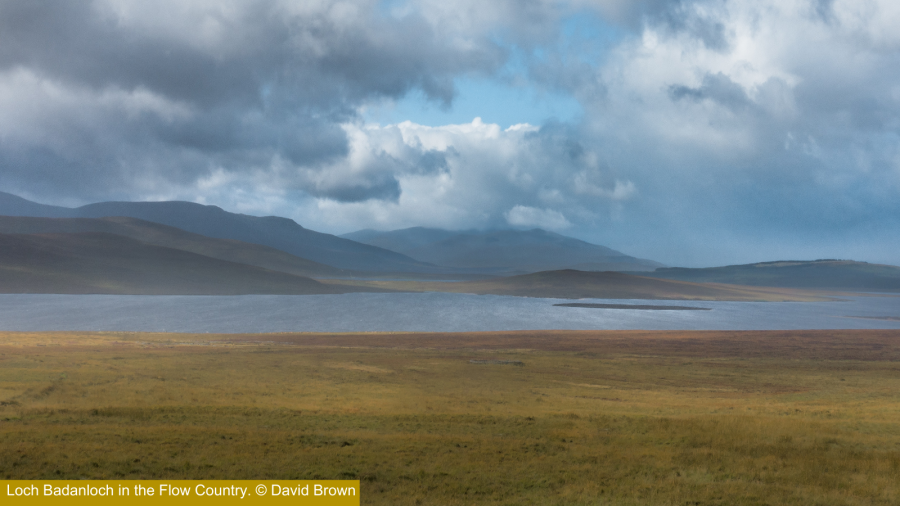
Food for the faithful
Salmon are a food source for protected species including otters and ospreys. During migration, these incredible fish transport nutrients from their marine habitats high into the reaches of rivers1. Additionally, fly-fishing for salmon is an important part of the rural economy in the Scottish Highlands, with people travelling from across the world to fish them. However, the species has faced catastrophic declines in recent years due to climate change, pollution and barriers to their migration. There are now around 2 million Atlantic salmon remaining in the wild, where once they numbered in the millions in single rivers during their runs, a vital source of food for predators similar to Pacific salmon in North America today1.
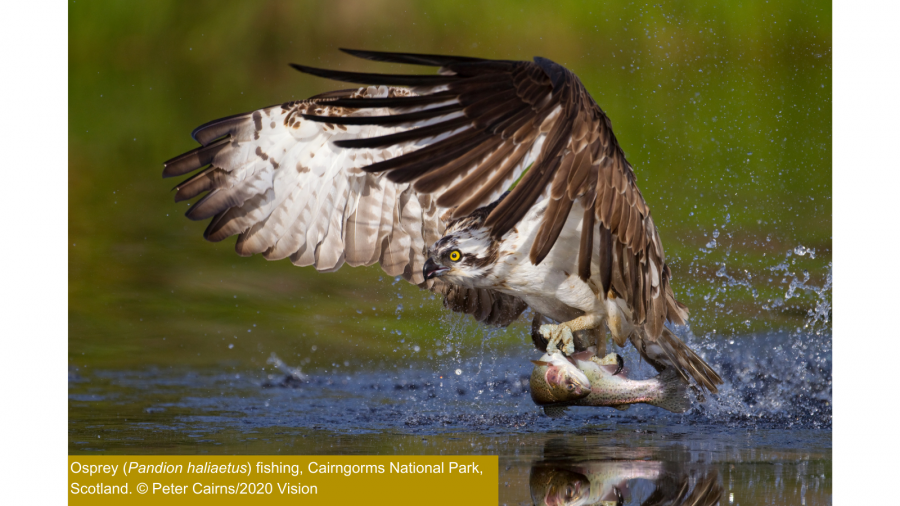
Atlantic salmon have long been revered; their moniker as ‘the king of fish’ a testament to their status. The Scottish Picts, a group of people in the Early Middle Ages, considered salmon to be gods. There is also a depiction of a salmon in the Abri du Poisson cave, part of the Vézère Valley UNESCO World Heritage site in France. The palaeolithic Abri du Poisson salmon is approximately 1 metre long and is the earliest known depiction of a fish in cave art.
Identification
Atlantic salmon are one of the largest salmon species, with weights upwards of 15 kg not uncommon for fish returning after multiple winters at sea. They can measure up to 1.6 m in length. Males are called cocks and females are called hens. The species is variable in colour depending on where it has spent time recently. In, or immediately on, their return from the ocean they are a bright silver colour with a darker line along the lateral spine and a number of black mottled spots scattered in the same area. They may also have pink colouring on the back. Those which have been in freshwater for weeks develop a green/brown colouration, with males developing a striking red pattern as they reach breeding readiness. Males also develop a distinctive hooked lower jaw (called a ‘kype’) in the breeding season, with which they fight rival males.
An existential threat
Stocks of Atlantic salmon have plummeted by 80% over the 25-year period since the 1970s2. This shows little sign of abating, with a 25% drop in existing numbers recorded between 2022-20233, leading to the IUCN Red List Assessment classifying the UK population of the fish as ‘endangered’, while the global population moved to ‘near threatened’4.
Salmon are a keystone species in their habitats, meaning they play a vital role in ecosystem functioning, but their sensitivity to change also means they are an important indicator of problems which can affect ecosystem health. They are important indicators of water quality as they are highly sensitive to pollution and temperature changes. Climate change, changing land use and vegetation cover all play a role in the ambient water temperature, diffuse pollution and altered flow rates. These factors all impact on the salmon lifecycle and their success in breeding and returning to the ocean.
Salmon farming has also been highlighted as problematic because parasites, particularly salmon lice, can proliferate and spread to wild populations. These lice have been highlighted as one of the most significant threats to wild salmon populations5. In addition, escapees from fish farms interbreed with wild salmon, threatening genetic integrity. Avoiding consumption of caged farmed salmon that is not certified as organic, or consuming land reared salmon, which is increasingly available, is a more sustainable alternative.
There is not only a significant threat to Atlantic salmon as a species, but to the livelihoods supported by salmon. This is particularly acute in Scotland, where the romantic image of the leaping salmon in fast running glen rivers has made the country a magnet for anglers from not only the UK, but around the globe. In a report published by NatureScot in 2020, it was highlighted that salmon fishing was worth around £73.5 million to the Scottish economy in 20046. Declining salmon numbers therefore have a broad economic impact, not only on the estates where fishing takes place, but also on the tourist infrastructure that has grown around this. Finding ways to reverse the current declines in salmon numbers is vital not only to maintaining a viable UK population but to the ecosystem services supported by the species.
The North Atlantic Salmon Conservation Organization (NASCO) is an international organization dedicated to prioritising and driving actions necessary to slow the decline of wild Atlantic salmon populations and demonstrate that restoration is possible.
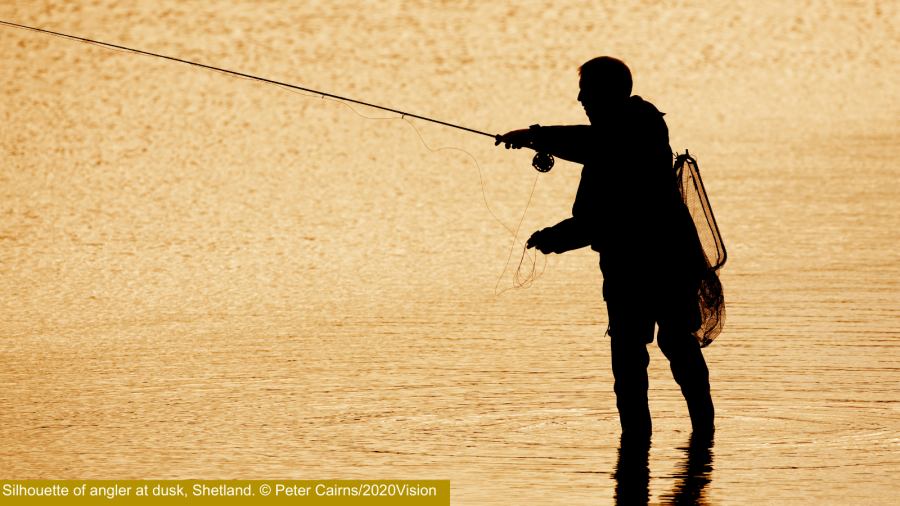
Peatlands and water quality
At present the impact of peatland quality is not adequately considered in the water framework directive (WFD) assessment for water bodies. The quality of the habitat is not taken into account under the WFD when characterising water feature assessments. Blanket bog is not characterised as a ground water or surface water dependent terrestrial system (GWDTE or SWDTE), despite peatlands having well documented impacts on water quality. There needs to be greater consideration given to the evidence which links peatland condition to water quality, as this will be vital to future water security and the survival of species such as the Atlantic salmon. In collaboration with the Environment Agency, the IUCN UK Peatland Programme is hosting a series of seminars focusing on water quality issues linked to peatlands in 2025.
The impact of a changing climate and habitat mosaic
Salmon breed in the headwaters of rivers; however, the average temperatures of our rivers are rising because of climate change, while loss of vegetation cover in some areas reduces the shading which keeps areas cooler. The optimum temperature for salmon to thrive ranges between 6-20°C, with a maximal growth range of 16-17°C. They start to exhibit stress at approximately 23°C, while mortality occurs around 33°C. According to Scottish Fisheries Management, in 2018, 69% of Scottish rivers experienced temperatures that would cause thermal stress on a least one day7. It is also worth noting that thermal effluent discharge from distilleries is a monitored activity by the Scottish Environment Protection Agency to ensure that ambient temperatures are not increased by more than 2°C or 3oC in pristine rivers7. However, this may increasingly present a challenge for industries undertaking these activities in the context of already warmer rivers, therefore mitigation approaches should be explored.
There is also an important discussion to be had concerning the role of trees in peatland landscapes, particularly along rivers and streams. Whilst we do not recommend the planting of trees in deep peat, there are transitional areas within the wider landscape such as the mineral edges of rivers which may have historically been home to trees, which would have provided shade and temperature regulation. Reintroducing trees along these riparian areas could support resilience where the shading could help to regulate water temperatures.
Spotlight on research
Liam Godwin, a postgraduate researcher in the Environmental Research Institute at the University of the Highlands and Islands, talked to us about his research into water quality and ecology, where he considers the impact on water quality and, by extension, salmon, of past human activity and current restoration activities.
“Peatlands naturally regulate water flow and influence sediment and nutrient cycles - critical to the health of downstream ecosystems. Human activities - such as historical peat cutting for fuel, post-war drainage for agriculture, and afforestation with non-native trees - have significantly degraded these peatlands. Degradation has often led to deteriorated water quality downstream, with increased sediment, nutrients, dissolved organic carbon (DOC), and harmful metals entering waterways. Degradation can also make river ecosystems more sensitive to rainfall, causing more pronounced peak flows. These disturbances to freshwater environments can impact salmon populations, especially juvenile salmon, which remain in rivers for 2 to 3 years before migrating to the sea.
Two main restoration strategies have been implemented across the Flow Country: drain-blocking and "forest-to-bog" (F2B) restoration. Drain-blocking aims to slow water flow, raise the water table, and rewet the bog, promoting the growth of Sphagnum mosses while reducing sediment and DOC concentrations. F2B restoration involves removing non-native conifers planted in the 20th century and blocking drains to restore natural bog ecosystems. Since 1994, when the RSPB began restoring what is now Forsinard Flows Nature Reserve, we've observed positive signs, such as the return of peatland invertebrates, plant species, and higher water tables. However, there are uncertainties about how these restorations affect freshwater habitats and biodiversity, particularly species that are dependent on healthy river systems, like the Atlantic salmon.
Despite progress, challenges remain. While we know peatland restoration improves water quality by reducing DOC and nutrient loads, it may also cause short-term disturbances that negatively affect freshwater ecosystems. This is particularly concerning for species like salmon, whose populations are already at risk. More research is needed to understand how restoration efforts impact freshwater ecology, as current studies have primarily focused on terrestrial recovery. The lack of data on the direct effects of restoration on river habitats and aquatic species represents a significant knowledge gap that I am working to address.
So far, I have observed notable changes in water quality in the first three years following forest-to-bog restoration. However, these declines did not bring water quality below SEPA's "good" thresholds, suggesting that salmon are unlikely to be significantly affected. After 10 or more years, the water quality closely resembled that of natural bogs. I have also not identified changes to the macroinvertebrate communities’ biomass or diversity following restoration, which are an important food source to salmon and other peatland wildlife. If other restoration projects adhere to the same practices as those implemented in the Forsinard Flows, we can expect minimal short-term impacts on salmon populations.
A growing concern that was not originally part of my research, but has become increasingly urgent, is the risk of low water flows and high temperatures in Highland rivers. This issue is likely to worsen with climate change, as warmer, drier summers become more common. In some cases, I have already recorded river temperatures exceeding 25°C. One immediate solution would be to encourage the re-establishment of natural riparian woodlands in the Highlands. These woodlands could help by slowing water flow, reducing the frequency of low-flow events, and providing shade to keep the water cool. However, riparian woodland restoration in the Flow Country faces challenges, particularly from high grazing pressure by deer and sheep, which hinders tree growth. Additionally, exclusion fencing is expensive to implement in the limited areas suitable for woodland growth, as trees would not naturally grow in the open bog, which is too wet, acidic, and nutrient poor.”
References
1. The Atlantic Salmon Trust. Why wild salmon matter - The Atlantic Salmon Trust The Atlantic Salmon Trust. ND.
2. Steinhoff, N. The missing salmon - Oceanographic (oceanographicmagazine.com). Oceanographic magazine. ND.
3. Unknown. River restoration "key" to saving Scotland's disappearing salmon | SCOTLAND: The Big Picture (scotlandbigpicture.com). Scotland, The Big Picture. 2024.
4. Unknown. Main UK population of Atlantic salmon move to endangered | Wildfish. Wildfish. 2023.
5. Bøhn T, Gjelland KØ, Serra-Llinares RM, et al. Timing is everything: survival of Atlantic salmon Salmo salar postsmolts during events of high salmon lice densities. Journal of Applied Ecology. 2020;57(6):1149-1160.
6. NatureScot. Freshwater fisheries | NatureScot. NatureScot. 2020
7. Fisheries Management Scotland. Water temperature – Fisheries Management Scotland (fms.scot) Fisheries Management Scotland. ND.

